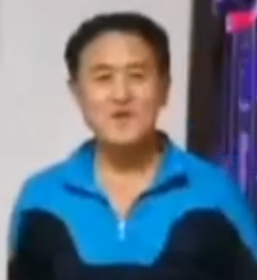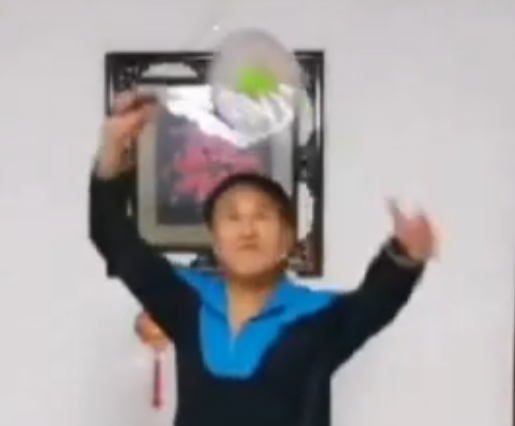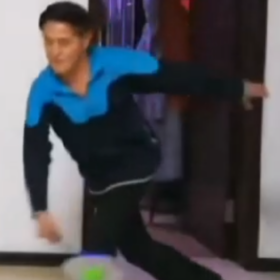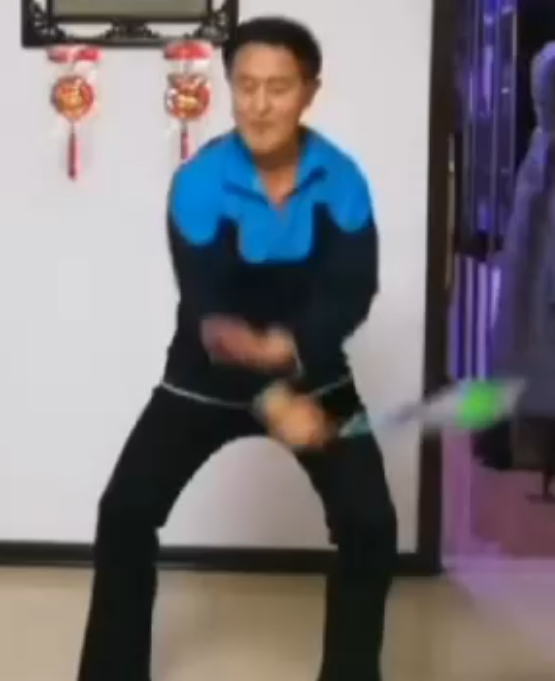Discours on the BailongBall Racket Sheet

As a BailongBall trainer of Chinese origin, I closely follow developments in my sport’s home country. Recently, a heated discussion about the equipment has flared up among the players in the social media channels. One proponent of the “back to the roots” initiative is Mr. Cao, who has been an officially certified instructor and referee since the birth of our sport. He advocates a solid basic technique and gives online lessons free of charge. More information about the lessons and activities of Mr. Cao Shu can be found on his Wechat account “gh_c82cddec20f5”.
I would like to provide you his current thoughts on equipment, translated as well as in orginal Chinese:
Currently, manufacturers attach great importance to the fact that the racket sheet (its blade / playing surface) should be as soft and thin as possible. The ball also receives some attention. Because if the ball is small and heavy, it will not fall off the racquet so easily.
At the very beginning of our sport, the old racket model came with a hard sheet. During the execution of the circular movements, one was forced to generate a centrifugal force to keep the ball on the racket. Nowadays, however, we use the “big soft sheet” and a small heavy ball that does not fall down even when standing. Therefore, the question arises: does BailongBall still require the centrifugal force?
After all the basic idea of BailongBall is to create a centrifugal force through the movements to keep the ball on the racket. That is why movements are standardized – e.g. arms controlled from the lumbar, force redirected into a circle, opening and closing movements coming in pairs, etc.
The new “big soft sheet” does solve the problem that the ball no longer falls so easily. But the whole thing should not be exaggerated. If the ball doesn’t fall down anymore with a vertical racket, because the frame holds the ball, then you don’t need centrifugal force to play BailongBall anymore. The constant turning of the racket is sufficient. The conscious control over the body takes a backseat, making room for almost arbitrary movements. This raises the question what typical BailongBall body movements should look like?
The “big soft sheet” combined with a small heavy ball throws the original theory of BailongBall out of the window and questions the technical level of the sport. If all that counts for the success of BailongBall is to appeal to a broad segment of the population, being satisfied just by keeping the ball on the racket, how can our sport develop? By means of street acrobatics?

Considerations should, therefore, be given to the sheet. Due to the constant technical development, some movements with a high degree of difficulty have been invented. It is acceptable for the sheet to have become correspondingly softer. The sports federation has now stipulated that the sheet must not sag more than 3.5 cm when the ball is resting on it.
This is fine. But the technical department should set the standard for the sheet and its hardness. Ball weight should remain constant at 54 g, even when reducing the diameter from 6.7 cm to 6.4 cm.

But most of the balls have a diameter smaller than 6 cm. In terms of weight, this is above the standard. Even if the balls kept the old weight of 54 g, the degree of curvature of the sheet increases due to the reduced ball volume. This means that the ball exerts greater pressure on the sheet and no longer falls off as easily. However, this also makes it more difficult to release the ball.
Whether or not all racket manufacturers follow this guideline depends on how strict competition officials are about enforcing matters. In the past, for example, we also practiced movements with a high degree of difficulty using a surface with 36 or 40 holes. This lowers skill requirements as compared to performing the same movements with a different, more demanding sheet. In short, with the old model the technical demand is higher than with the “big soft sheet”. Therefore, the technical department should set and strictly enforce the standard for rackets and balls at the competition. What is the standard? Is there already a clear definition? If not, how can the referees be guided by standard specifications?


Cao Shu, officially approved instructor and referee for BailongBall
We should practice with the standard racket in everyday life. Participants in competitions should also use rackets in accordance with the same standard. If necessary, officials should provide standardized rackets and balls for competitions. This is the only way to guarantee that everyone can participate in a competition under the same conditions. This is only fair.
The result should not take center stage at all costs. Rather you should show your real skill level at a competition. This is also a requirement for the technical department of our organization – how to fairly evaluate the level of a player? One thing is for sure: for the same movement, the technical skill required for handling a sheet of 47 cm with 40 holes is higher than compared to handling the new short racquet with the “big soft sheet”.
Translated and summarized by Cheng Liqin from the original Chinese text by Shu Cao.
关于拍面的讨论
現在各厂家都在拍面软,薄上,球小而重上下功夫,球入拍就沉下不掉球。过去的老拍型可逼着我们做绕圆的动作,而产生离心力。而大软的拍面配小又重的球,甚至立着不动都不掉球了。到底我们的柔力球还需不需要离心力了。柔力球的动作主要是使球产生离心力,而为了产生离心力,才规范我们的动作,什么前程发力,什么以腰带臂。但是这种大而软的拍面,是解决了容易掉球的问题。但是不可太过,甚至垂直立着不动都不掉球,直接拍框托着球。这样已不需要离心力,直立着捻拍转就行,沒有了约束怎么做的都有。今后的柔力球的动作,将如何解释,如何讲课。
大而软的拍面配小而重的球,已经颠覆了原本的柔力球的理论。柔力球的技术含金量将受到质疑。如果光为了普及大众,迎合一些人只要不掉球,就是成功的要求,那么柔力球还有什么技术含金量,没有了技术要求的柔力球还有什么发展?真成了亍边的杂耍了。不知道我说的对不对。
拍面的改革是必要的,由于柔力球技术不断的深化挖掘创新,一些高难度动作迎运而生。拍面适当变软是可以的,这次体协规则规定,球放入拍面,最低深度不超过3.5cm,是可以的。但是技术部应该定出拍面大小及硬度弹力的标准,和相应的限制。应以静止垂立不含球,能侧立拍抛出球为准。而且球的直径由6.7cm缩为6.4em也是可以的,但是重量还要保持在54克左右为好。但是现在的球大部分都是小于6cm了,而重量别说超重,就是原来的重量,由于体积变小,球面曲率增大,而使对拍面的压强增大,球往下陷,不利于抛球,侧立抛球易撞在拍框上弹回。上级能否让各厂家都尊循这个规定,主要是比赛组办单位能否严格执行这一规定!过去我们做的某些高难度动作,也都是用的36或40孔的拍面,这种拍面与大软拍面做同样动作,在技术难度上是不相同的,老拍面技术难度大,大软拍面技术难度低。所以技术部应该是做出比赛的用拍面的规定来,要接规则规定的能侧立出球的拍面及球的直径。如何介定技术标准,上级体协技术部是否有明确的解释?否则比赛的裁判以什么为技术依据?大家平时也应用标准拍面练球,参赛人员应该是用同规格的拍子,拍面,如果各人统一不了,比赛的主办单位应备用公用比赛拍子,保证大家在同等条件下参赛,这样才公平,公正。
虽然说成绩不主要,这是应具备的谦虚的心态,但是比赛还是要看到参赛者真实成绩的。不追求不等于不要成绩,做为组办主管技术部门也是需要考核柔力球真实的水平的。这应是柔力球这一体育项目所应规范的要求,不能象小孩子过家家似的,这不是儿戏。闲着没事又瞎操心了,我又不参赛,只是聊一下今后比赛的真实性,公平性。必竟每一个人的努力程度不同,有人用规范的拍面练,有人用大软拍面练球,练出来的真实的技术水平也不同。应该是有一个公平公正的比赛要求,真正考核出柔力球的真正的技术水平来。这对那些刻苦按规矩规范用拍的球友也是公平的,对所有柔力球人都是公平的。比赛凭真本事,比出真本事。这才是柔力球真实的水平,而不是靠球拍大软面托球。
我们都是研究柔力球技术的,那么同样的动作,用不同拍面所显示的技术能力是不同的。咱们用15年的40孔拍面的47cm的老拍子,与现在的薄软的拍面的又轻又短的新拍做比较。甚至是有的人同样的动作,换了这种40孔原来47cm的拍子就做不出来了。大家信不信。 我又胡说一通,望大家广泛的聊一聊拍面的问题。能否无限制的软下去。考不考虑抛球的效果,考不考虑柔力球的技术含量?
曹树
Finally, here is a short video of Shu Cao:
Liqin Cheng
BailongBall Trainer

 Deutsch
Deutsch
Die Bewegungen aus der Ursprungszeit, in denen die Zentrifugalkräfte noch Bedeutung hatten, sollten weiterhin in ihrer Bedeutung erhalten werden.
Damit Unterschied sich unser Sport bedeutend von Allem bisherigen. Der gesundheitliche Aspekt, die Überwindung von Bewegungs Einschränkungen war damit optimal vermittelbar.
In der aktuellen Entwicklung ist vieles davon unberücksichtigt. Von den viel gepriesenen traditionellen Wurzeln scheint wenig übrig geblieben.
Vom gesundheitlichen Aspekt ist “nur” die Bewegung per se geblieben.
Es besteht die Gefahr, dass unser Sport zum Massenproduktion aus Fernost verkommen kann.
Die Aktivitäten von Herrn Shu Cao sollte aus unseren europäischen Kreisen Unterstützung erhalten.